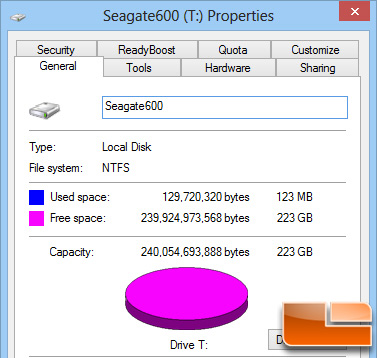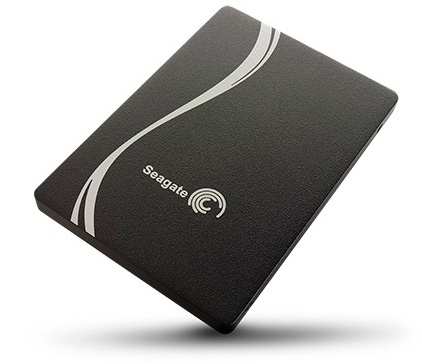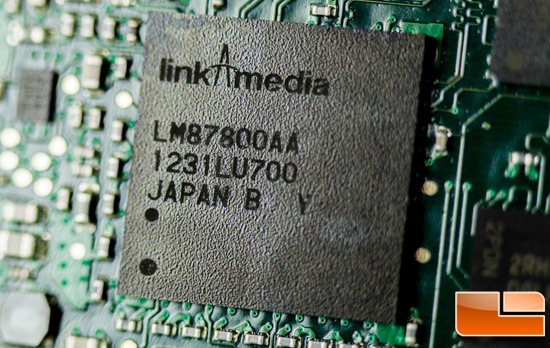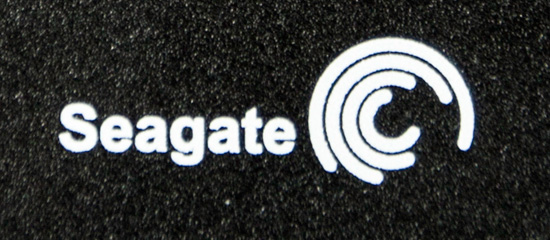Seagate 600 240GB SATA III 6Gbps SSD Review
Final Thoughts & Conclusions
For the Seagate 600 240GB drive, the user ends up with a healthy 223GB that addressable for use. This is similar to the level of overprovisioning we see on SandForce drives after the conversion from GB (1GB byte = 1,000,000,000 bytes) as expressed in hardware storage to GiB (1Gib = 1,073,741,824 bytes) as expressed in virtual storage.

Seagate is certainly one of the titans when it comes to PC storage options – both consumer and enterprise. It makes sense for them to use their considerable infrastructure to make their mark on the SSD market segment – something they’ve been slow to do. With the 600 series of drives, they do offer up a consumer version and a pro version for enterprise. One thing the Seagate 600 brings that you can’t find on another SSD that we’re aware of is the 5mm z-height. Not many devices call for it but it’s nice to have the option. Otherwise, you get the already thin 7mm form factor.

We found performance on our 240GB drive to be very good with the Link_A_Media Devices (LAMD) LM87800 controller handling all the heavy lifting. The specifications of 550MB/s reads and 450MB/s writes were hit without a problem and even on incompressible data, speeds were solid. IOPS performance was very good as well, exceeding the 80,000/70,000 reads/writes by a bit to place in the upper portion of the comparison list. Its performance is not unlike that of the Corsair Neutron GTX drive which has similar components; each giving very consistent performance. With the recent acquisition by SK Hynix, it remains to be seen what will happen with the controller as far as licensing options go.

For the consumer version of the 600 that we had a look at, it’s offered at capacities of 120GB, 240GB and 480GB for $124.41, $209.00 and $499.00 respectively. For the 240GB drive, that pans out to be about $0.94 per usable GB. That’s a pretty competitive price at a time when margins are shrinking and the player pool is shrinking. Seagate should be able to remain competitive in this space with their strong brand in the storage industry and existing infrastructure. They also stand to get in on the bread an butter of the SSD market which is OEM sales. It’s not clear how much of the controller firmware is customized by Seagate but it may be a good way to differentiate them from others using the same controller, similar to what Intel did with the SF-2281 controller.

Legit Bottom Line: The Seagate 600 is a solid drive based on the LAMD LM87800 controller with consistent performance, competitive pricing, and a brand consumers know very well.

Comments are closed.